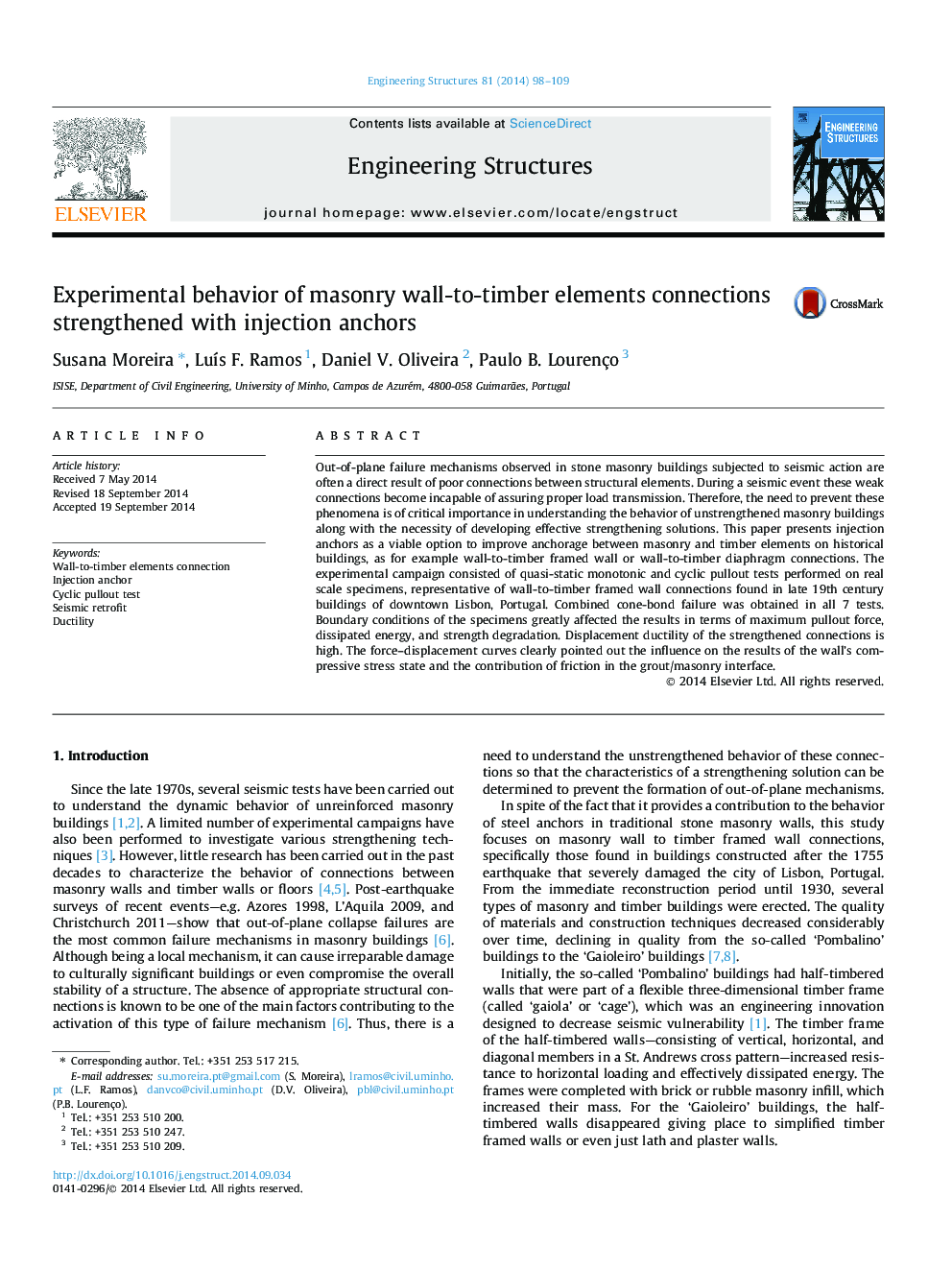| Article ID | Journal | Published Year | Pages | File Type |
|---|---|---|---|---|
| 6740702 | Engineering Structures | 2014 | 12 Pages |
Abstract
Out-of-plane failure mechanisms observed in stone masonry buildings subjected to seismic action are often a direct result of poor connections between structural elements. During a seismic event these weak connections become incapable of assuring proper load transmission. Therefore, the need to prevent these phenomena is of critical importance in understanding the behavior of unstrengthened masonry buildings along with the necessity of developing effective strengthening solutions. This paper presents injection anchors as a viable option to improve anchorage between masonry and timber elements on historical buildings, as for example wall-to-timber framed wall or wall-to-timber diaphragm connections. The experimental campaign consisted of quasi-static monotonic and cyclic pullout tests performed on real scale specimens, representative of wall-to-timber framed wall connections found in late 19th century buildings of downtown Lisbon, Portugal. Combined cone-bond failure was obtained in all 7 tests. Boundary conditions of the specimens greatly affected the results in terms of maximum pullout force, dissipated energy, and strength degradation. Displacement ductility of the strengthened connections is high. The force-displacement curves clearly pointed out the influence on the results of the wall's compressive stress state and the contribution of friction in the grout/masonry interface.
Keywords
Related Topics
Physical Sciences and Engineering
Earth and Planetary Sciences
Geotechnical Engineering and Engineering Geology
Authors
Susana Moreira, LuÃs F. Ramos, Daniel V. Oliveira, Paulo B. Lourenço,
